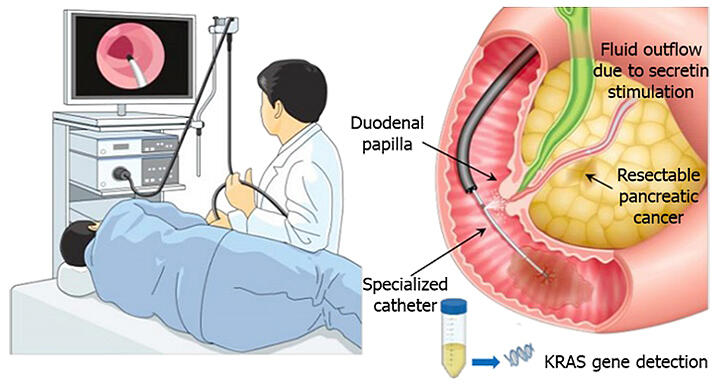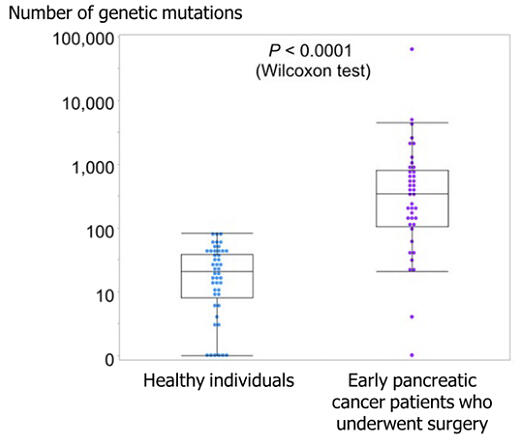A research group from the University of Osaka has announced the development of a method to detect pancreatic cancer, a difficult-to-treat cancer, with high accuracy during routine gastroscopic examinations commonly performed in health checkups and comprehensive medical examinations. The key is collecting secretions from the pancreas and examining them for genetic mutations that exist in most pancreatic cancers, making early detection possible merely by adding a simple 1-2-minute examination during a gastroscopy.
Professor Shinichi Yachida's research group from the Graduate School of Medicine at the University of Osaka focused on the fact that mutations in a gene called "KRAS," found in most pancreatic cancers, could serve as a marker for the presence of cancer.
The method developed by the research group is based on the fact that the majority of pancreatic cancers originate from the pancreatic duct. First, a drug (secretin) that promotes pancreatic fluid secretion is injected intravenously before the gastroscopic examination. Next, the gastroscope is positioned at the duodenal papilla, which is the exit of the pancreatic duct, and a special catheter is inserted. Physiological saline is released from the side hole of the catheter to wash the area before collecting the secretions. The collected fluid is then analyzed for KRAS gene mutations. The system diagnoses the presence or absence of cancer based on the number of mutations.

Provided by the University of Osaka
The research group, with cooperation from 10 medical institutions nationwide, tested their developed method on 75 healthy individuals and 89 early pancreatic cancer patients. The results showed 100% specificity (the proportion of healthy people correctly identified as negative) and 80.9% sensitivity (the proportion of cancer patients correctly identified as positive). These figures greatly exceeded the established criteria for test methods, confirming the high accuracy of this diagnostic approach.
Pancreatic cancer often progresses without symptoms. Early detection is difficult, and the cancer tissue tends to metastasize to surrounding lymph nodes and the liver even when small. It's a typical difficult-to-treat cancer that is often already advanced by the time it's discovered.
The five-year and ten-year survival rates for many cancers have been steadily increasing. However, according to statistics from the National Cancer Center, the five-year survival rate for pancreatic cancer is remarkably low at about 13%. On the other hand, patients who were detected early, underwent surgery, and received subsequent chemotherapy have a five-year survival rate of approximately 53%, making early detection the greatest challenge.
The research group has determined that pancreatic cancer grows over a long period of approximately 15 to 20 years. However, currently implemented tumor markers (CEA and CA19-9) are inadequate for detecting early pancreatic cancer and are not recommended for screening tests in the United States.
Yachida's group expects that the addition of this testing method to gastroscopic examinations, particularly for individuals who have a high risk of pancreatic cancer, will facilitate early detection and treatment. The group aims to achieve practical application of this method as it represents a significant step toward overcoming pancreatic cancer.

Provided by the University of Osaka
Original article was provided by the Science Portal and has been translated by Science Japan.




